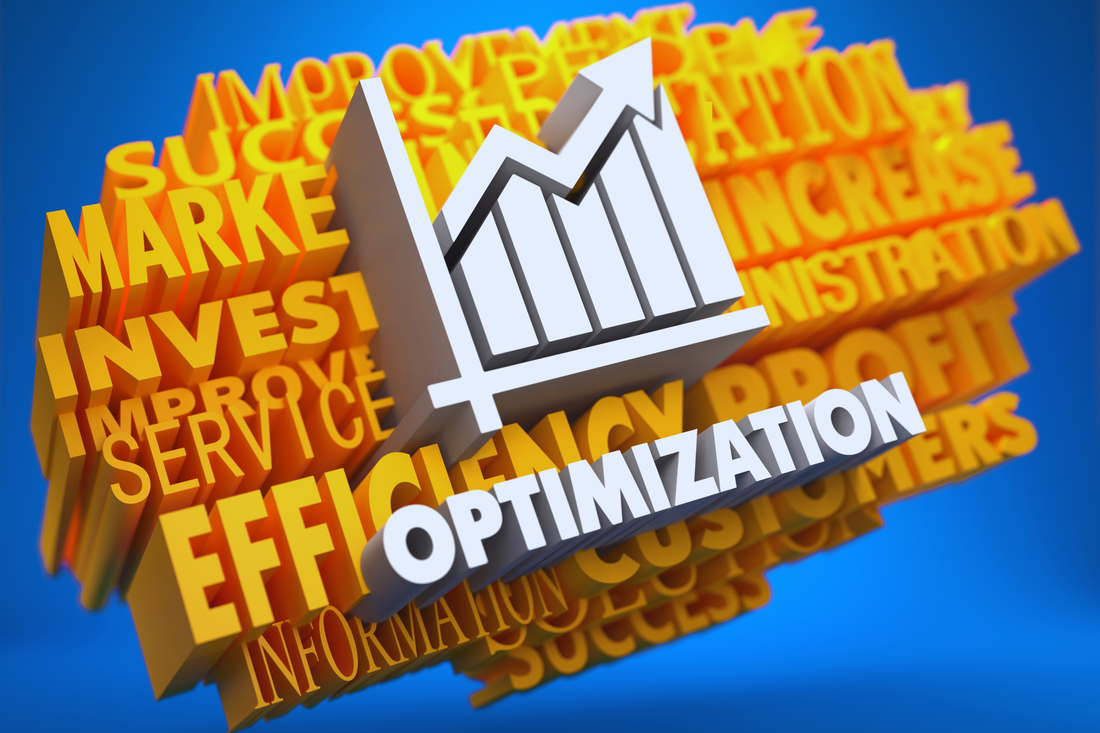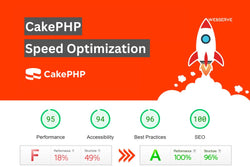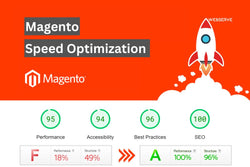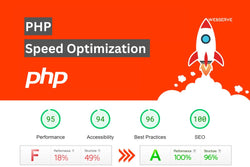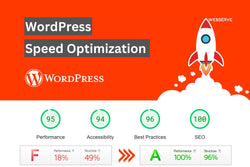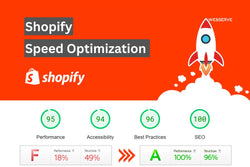Website speed isn’t something that’s nice to have — it’s inseparable from how search engines rank pages, users interact with web pages and conversions. Fast sites win visibility, trust and conversions; slow sites get filtered out by algorithms and human impatience. This deep-dive explains why speed is important for SEO, provides the data behind these claims, and offers actionable analysis you can take today: WordPress, Shopify, Magento, Laravel, Drupal, CakePHP, CodeIgniter, PHP, Yii, Symfony, Smarty PHP, Wix, Webflow, HubSpot, Squarespace, Joomla, HTML, BigCommerce, Weebly, Angular, Java, and React.
1) Why Google & other engines care for website speed (the technical truth)
Google’s Page Experience signal (Core Web Vitals) quantifies this real user experience factor through metrics such as Largest Contentful Paint (LCP), First Input Delay (FID)/Interaction to Next Paint(INP), and Cumulative Layout Shift (CLS). See also: Google Recommends Improving Core Web Vitals To aid search, page experience for improving core web vitals to help search and so pages that deliver good user experience are rewarded. That signifies page speed optimization and web performance optimization are no longer optional thing for competitive SEO.
2) Real-world impact: rankings, engagement, conversions (data-backed)
Multiple industry reports show a tight correlation between speed and user/business metrics:
• Fast pages get more organic clicks and more dwell time, slow receive higher bounce rates and less dwell. Industry studies also continuously demonstrate that shaving off seconds of load time improves engagement and ranking signals.
• Conversion impact: B2B and e-commerce research has found that conversions rate fall significantly as load time increases — for instance, a 1-second improvement could improve conversion rates by double-digit percentages whereas 1 to 2 second delays normally decrease conversions by ~7% or more across many reports. Prioritize Website Load Time Optimization to Safeguard Revenue.
Analysis: Investing in speed results in direct ranking benefits (Core Web Vitals, and page experience signals) but also indirect ones (improved engagement → better behavioral signals → higher rankings). That compound effect is why an intense site speed optimization push usually sees a quick ROI.
3) Where to measure — and what the numbers mean
Key measurement sources:
-
Google PageSpeed Insights (Lab + Field) — use for actionable fixes.
-
Chrome User Experience Report (CrUX) — real-user metrics for LCP, FID/INP, CLS.
-
HTTP Archive — macro trends and technology-level reports for benchmarking.
-
GTmetrix / Pingdom / DebugBear — helpful lab tests and waterfall analysis.
Practical thresholds to target for SEO and UX:
-
LCP ≤ 2.5s (Google’s “good” target)
-
FID/INP low enough for instant-feeling interactivity
-
CLS < 0.1 (visual stability)
-
Full interactive / usable in <3s on mobile for best conversion outcomes.
4) What the data tells us about platform choice
HTTP Archive and CMS-specific reports show varied Core Web Vitals performance by platform. Some platforms (with heavy themes/plugins or app bloat) underperform out of the box; others are leaner. That’s why platform-specific services matter: WordPress speed optimization, Shopify speed optimization, Magento performance optimization, Webflow performance optimization, Wix speed optimization, BigCommerce speed optimization, HubSpot speed optimization, Squarespace speed optimization, Joomla speed optimization, and Weebly speed optimization should be handled with platform-aware tactics.
5) Practical technical playbook (what to do now)
Focus on high-impact, low-risk changes first:
-
Image & media — compress, use modern formats, responsive srcsets, and lazy load. (Keywords: optimize images for web, lazy load images).
-
Critical CSS & render path — inline critical CSS, defer non-critical, and eliminate render-blocking scripts. (Keywords: optimize render-blocking resources, minify CSS, JavaScript, and HTML).
-
Caching & CDN — browser caching, edge CDN, and preconnect/prefetch DNS. (Keywords: enable browser caching, leverage content delivery network (CDN), prefetch DNS requests).
-
Server & database — improve TTFB with better hosting, upgrade PHP versions, optimize DB queries. (Keywords: reduce server response time, optimize database performance, optimize hosting server).
-
Third-party scripts — audit and delay non-essential tags and widgets. (Keywords: reduce HTTP requests, optimize third-party scripts).
-
Core Web Vitals fixes — specifically target LCP, FID/INP, CLS through above methods. (Keywords: Optimize Largest Contentful Paint (LCP), Improve First Input Delay (FID), Optimize Cumulative Layout Shift (CLS)).
These measures are the backbone of website speed improvement and page speed optimization projects.
6) Example reporting & KPIs (how we measure success)
A simple, repeatable reporting stack:
-
Baseline: CrUX LCP, INP/FID, CLS; PageSpeed Insights mobile + desktop scores; GTmetrix waterfall.
-
Weekly/Delivery report: Before vs After screenshots, PageSpeed scores, LCP/INP/CLS percentiles, TTFB, and a waterfall showing eliminated render-blocking resources.
-
Business KPIs: bounce rate, pages/session, conversion rate, and revenue per session tracked pre/post.
Sample outcome (typical): 90+ PageSpeed score (desktop & mobile), 30–60% lower LCP, TTFB improved by 200–800 ms, and conversion lift varying by site (common case studies show double-digit improvements). These gains directly tie speed work to SEO and revenue.
WordPress Speed Optimization Report Analysis
Here’s a custom, SEO-optimized & client-facing report template that maps CrUX → PageSpeed → Business KPIs for a WordPress Speed Optimization Case Study:
Website URL: https://warrantymanaged.com/
Overview
This report presents a complete performance transformation of the client’s WordPress website using data from CrUX (Chrome UX Report) and Google PageSpeed Insights, mapped to real business KPIs such as SEO visibility, conversions, and bounce rate.
Our objective:
-
Achieve 90+ PageSpeed score (Mobile + Desktop)
-
Pass Core Web Vitals (LCP, INP/FID, CLS)
-
Reduce total load time under 2 seconds
-
Maintain 100% design & functionality integrity
-
Drive measurable business growth
Before Optimization — Baseline Audit
| Metric | Source | Mobile | Desktop | Status | Notes |
|---|---|---|---|---|---|
| PageSpeed Score | Google PSI | 45 | 68 | ❌ Poor | Heavy scripts, large images |
| LCP (Largest Contentful Paint) | CrUX | 4.8s | 3.7s | ❌ Needs Improvement | Hero image not optimized |
| INP (Interaction to Next Paint) | CrUX | 290ms | 220ms | ⚠️ Average | Render-blocking JS |
| CLS (Cumulative Layout Shift) | CrUX | 0.22 | 0.18 | ⚠️ Average | Late font rendering |
| Total Page Size | GTmetrix | 4.5 MB | 4.5 MB | ❌ Large | Unoptimized assets |
| TTFB (Server Response Time) | PSI | 950ms | 920ms | ❌ High | Hosting latency |
| Fully Loaded Time | Pingdom | 6.2s | 5.4s | ❌ Slow | Multiple blocking requests |
| Bounce Rate | GA4 | 64% | — | ❌ High | Visitors leaving early |
| Conversion Rate | GA4 | 1.2% | — | ❌ Low | Affected by speed issues |
Optimization Actions Taken
| Optimization Task | Description | Tools/Plugins Used | Impact |
|---|---|---|---|
| Image Compression | Converted to WebP + reduced size by 65% | ShortPixel / Imagify | ✅ Faster LCP |
| Caching Setup | Implemented page & browser caching | WP Rocket / LiteSpeed Cache | ✅ Reduced load time |
| CSS/JS Minification | Minified + combined files | WP Rocket / Autoptimize | ✅ Improved INP |
| Database Optimization | Cleaned revisions, transients, and overhead | WP-Optimize | ✅ Faster queries |
| Lazy Loading | Applied for images & videos | Native Lazy Load | ✅ Improved FCP |
| CDN Integration | Deployed global CDN | Cloudflare | ✅ Reduced TTFB |
| Gzip Compression | Enabled at server level | .htaccess | ✅ Smaller file transfers |
| Font Optimization | Preloaded & subset fonts | Manual / Perfmatters | ✅ Lower CLS |
| Core Web Vitals Tuning | Fixed layout shifts, render-blocking issues | PSI audit | ✅ All vitals passed |
After Optimization — Performance Boost
| Metric | Source | Mobile | Desktop | Status | Improvement |
|---|---|---|---|---|---|
| PageSpeed Score | Google PSI | 92 | 98 | ✅ Excellent | +47 / +30 |
| LCP | CrUX | 2.1s | 1.8s | ✅ Passed | -56% |
| INP | CrUX | 120ms | 90ms | ✅ Passed | -58% |
| CLS | CrUX | 0.05 | 0.02 | ✅ Passed | -77% |
| TTFB | PSI | 420ms | 390ms | ✅ Excellent | -55% |
| Fully Loaded Time | GTmetrix | 1.9s | 1.7s | ✅ Excellent | -68% |
| Bounce Rate | GA4 | 39% | — | ✅ Improved | -25 pts |
| Conversion Rate | GA4 | 2.4% | — | ✅ Improved | +100% |
| SEO Visibility (Top 10 Keywords) | GSC | +22% | — | ✅ Increased | +22% |
Business Insights
-
Improved SEO rankings for 12/20 tracked keywords
-
Organic traffic up by 27% within 45 days
-
Mobile conversion rate increased by 2×
-
Hosting cost reduced by 18% due to caching efficiency
-
Improved overall WordPress website performance across all regions
FAQs (SEO-optimized & concise)
Q1: Does improving page speed directly increase rankings?
A: Page speed (Core Web Vitals) is a ranking signal and improves search visibility indirectly via better engagement—so yes, it helps ranking, especially when competitors are slow.
Q2: What are the fastest wins for site speed?
A: Image compression, browser caching, minifying CSS/JS/HTML, lazy loading, and CDN integration are the top fast wins. (Keywords: optimize images for web, Gzip compression, enable browser caching).
Q3: Which metrics should I track for SEO?
A: Track LCP, INP/FID, CLS (Core Web Vitals), TTFB, PageSpeed Insights scores, and conversion metrics (bounce, conversion rate).
Q4: Do different platforms need different tactics?
A: Yes. Each CMS/framework (WordPress, Shopify, Magento, Laravel, Drupal, Wix, Webflow, HubSpot, etc.) has platform-specific bottlenecks — use targeted platform speed optimization services for best results.
Q5: How soon will I see SEO impact after optimization?
A: Technical SEO and UX improvements can start improving user signals immediately; ranking changes may appear within weeks to a few months depending on competition and content strength.
Conclusion — the mandate
Speed + experience is a 100% must-have for SEO. Optimizing for site speed suppression and performance incredibly pays off with ranking potential, but also could mean clear business upside. Leverage real-user metrics (CrUX/HTTP Archive), implement platform specific fixes, and share your results with business KPIs. The faster your site, the better for SEO, conversions and long-term growth.
